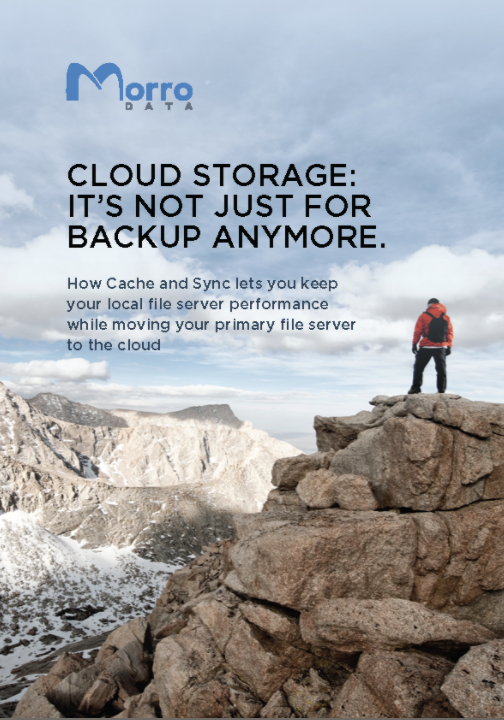Free Download
Cloud Storage:
Its Not Just For Backup Anymore

How Cache and Sync let you keep your local file server performance while moving your storage server to the cloud.
This eBook covers:
Chapter 1: Cloud Storage: Not Just for Backup Anymore
Chapter 2: Solving the Cloud Performance Challenge
Chapter 3: Only Pay for What You Use
Chapter 4: CloudNAS Enhances Your Business’ Efficiency
Chapter 5: Conclusion
eBook Introduction
Businesses in various industries (Media and entertainment, biotech, engineering) generate large workflow files that need to be securely stored and distributed both internally and externally to clients. These files can include anything from multimedia content to scientific research data, and they require robust storage and sharing solutions that can accommodate their size and complexity.
Common Performance Problems in Cloud Storage Services
- Network Latency: Cloud performance is heavily dependent on the network. High latency or network congestion can result in slow application response times, which can negatively impact user experience.
- Scalability: Cloud services should be able to scale easily based on the demand of the users. However, if an application or service isn't designed for scalability, it may be difficult to handle large numbers of users and the associated workload, which lead to performance issues.
- Data Transfer Bottlenecks: Data transfer between cloud services or applications can be a bottleneck if the network bandwidth isn't sufficient or the data is too large.
How to transfer large files
One of the challenges that businesses face in managing these files is the need to transfer them quickly and reliably between different devices and storage locations. Traditional methods of file transfer, such as FTP protocols, can be slow and cumbersome, requiring multiple steps and technical knowledge to complete. This can be especially frustrating for users who are not familiar with FTP and other technical tools.
This ebook provides insights on simplifying file navigation and transfer while also eliminating the need for users to learn new tools or protocols, thereby reducing the learning curve and increasing productivity.
Sign Up and Get Instant Access
* These fields are required.
